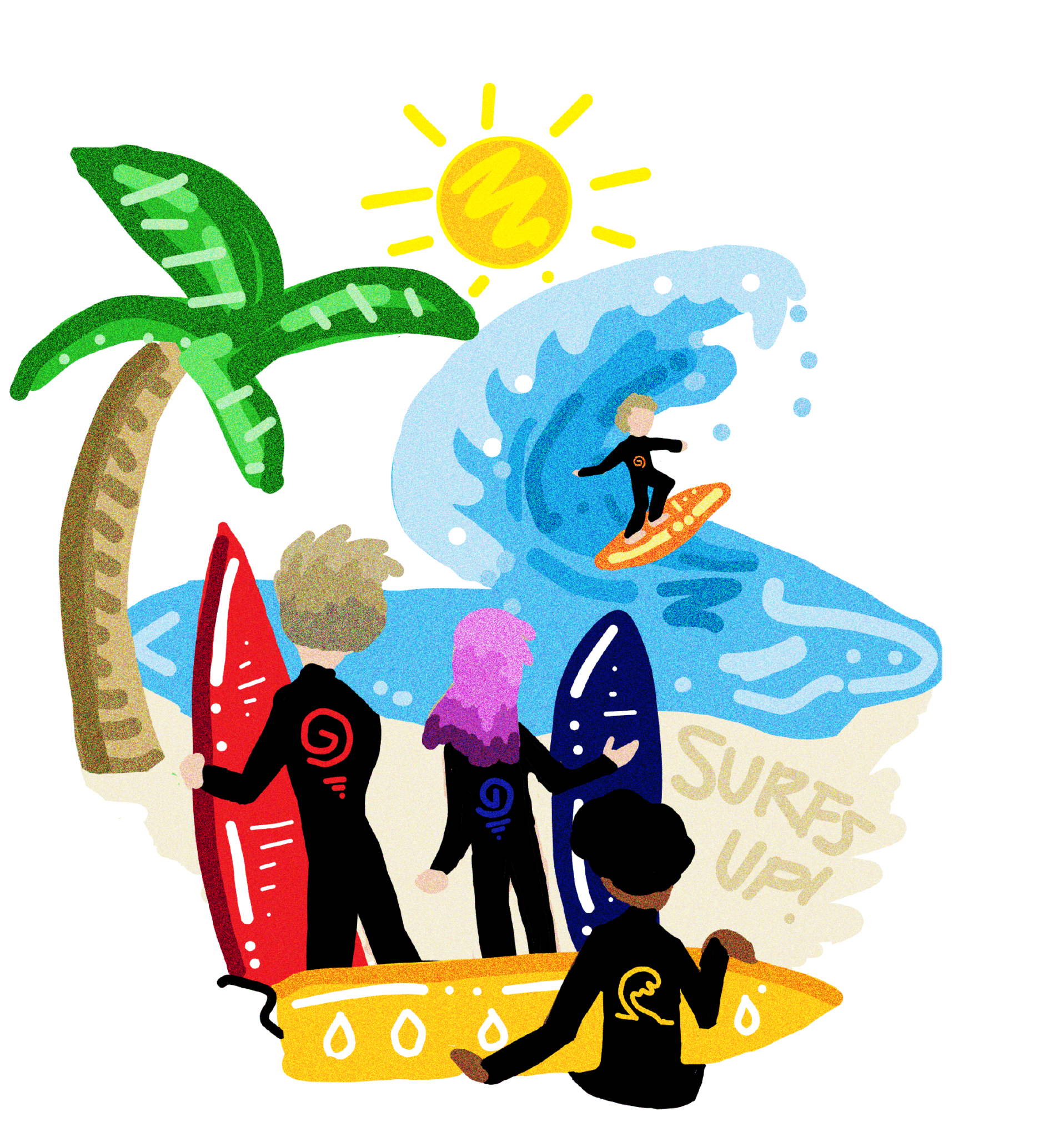Like many Australians, I spent my summer at the beach. I am a beginner surfer, although I’ve spent my entire life living on Sydney’s Eastern Coastline. While it has always captivated me as an unassuming yet enamouring activity to watch from the shoreline, I had never before been on a board, so when I had the opportunity to take up the sport during a brief period of unemployment last year, I decided to give it a go. I was by no means a prodigy. I slipped, and fell, and fumbled (as I still do). Most of all, I found there is no better feeling than sitting on a board in the sun, patiently scanning the horizon, feeling the tilt of your board and your body as you ride your next wave. It was ecstasy. But, along with this came a sense of unease. Eager to share the sport with others like me, I asked a girl in one of my classes last year if she would come surfing with me to which she exclaimed “I’ll surf with you, but not in Bondi. It’s too white there.” While it is easy to be embraced by the surf, it is far more difficult to be accepted by the community of, typically white, surfers that seem to dominate our coastline. Localism runs rife here, despite the near-perfect conditions for beginners in Bondi. Yet, the beating heart of the sport is its pre-colonial, and decolonial history, invented and further kept alive by surfers of the colonised world and Global South with a liberatory and inclusive ethos.
Surfing is the legacy of pre-colonisation Polynesia, though the exact date of its creation is unknown. Scott Laderman, in A Political History of Surfing, speaks to the all-encompassing traditional history, from“the selection of a tree out of which a board might be shaped,” to “the interactions of the wave riders and spectators, surfing, which involved all strata of society” as representing “a ritualised set of practices at the core of what it meant to be Hawaiian.” Surfing, however, diminished in Hawaii following the colonisation of the islands. The activity became associated with “barbarity,” while native Hawaiians became slaves to settlers. It was not until Duke Kahanamoku, legendary Hawaiian surfer and swimmer, entered the scene that surfing became a legitimate and respected sport. But the sport was not free from its chains, and the white settler shadow was not done with its violent appropriation.
As with all pure things touched by colonisation and the newly commercialised world, surfing became quickly commodified. The craft of making traditional wooden surfboards was superseded by the quest for profit. Surfing sold the dream of Hawaiian tourism (as a newly minted American global outpost and latest installment of the imperial project), of culture laid bare for the Western man and his family to enjoy at their leisure. Its image and connotation were quickly being replaced by Californian surf culture, and new fervour for the activity in Australia, South Africa, New Zealand, and France. Soon, surf shops selling Ripcurl, O’Neill, Hurley and other notable surf brands popped up on every beach..
So, we take ourselves back to our coast; to Bondi, Maroubra and Manly. To the image we sell to the world of the sunbleached-blonde haired, blue-eyed, white Australian. Where white surfers may use their presence as a method of warding off beginners who snake their waves, pervasive localism is a reminder of a colonial ideology that continues to claim ownership over land, while partaking in a sport whose core ethos is liberation. Once we claim ownership or exclude, we erase Indigenous sovereignty, and we deny accessibility to the sport. Colonists created a market for surf tourism, much of which is unsustainable and fuelled by travellers from the Global North exploiting the Global South (particularly South East Asia) for their beautiful surf and cheap prices while wreaking environmental and social havoc. It is difficult to separate the exclusionary politics of the sport from the demography of Bondi and Sydney’s Coastal Suburbs, which remains predominantly white and notoriously difficult to access, as well as the larger settler-colonial status of the Australian state.
Surfing is liberation. It requires patience, it requires submission to nature, to forces that are bigger than you, it requires grace and reckoning with your own smallness. It is inherently slow, antithetical to the pressure from our neoliberal society that imposes pace. Let’s commit to the decolonisation of the practice. The image the West has created of surf culture, a notion that so defines Australian identity, has real, tangible consequences for minority communities. White-Localism cannot coexist with decolonial justice. Where cultural appropriation runs rife on our coastlines, decolonisation begins with the individual surfer.





